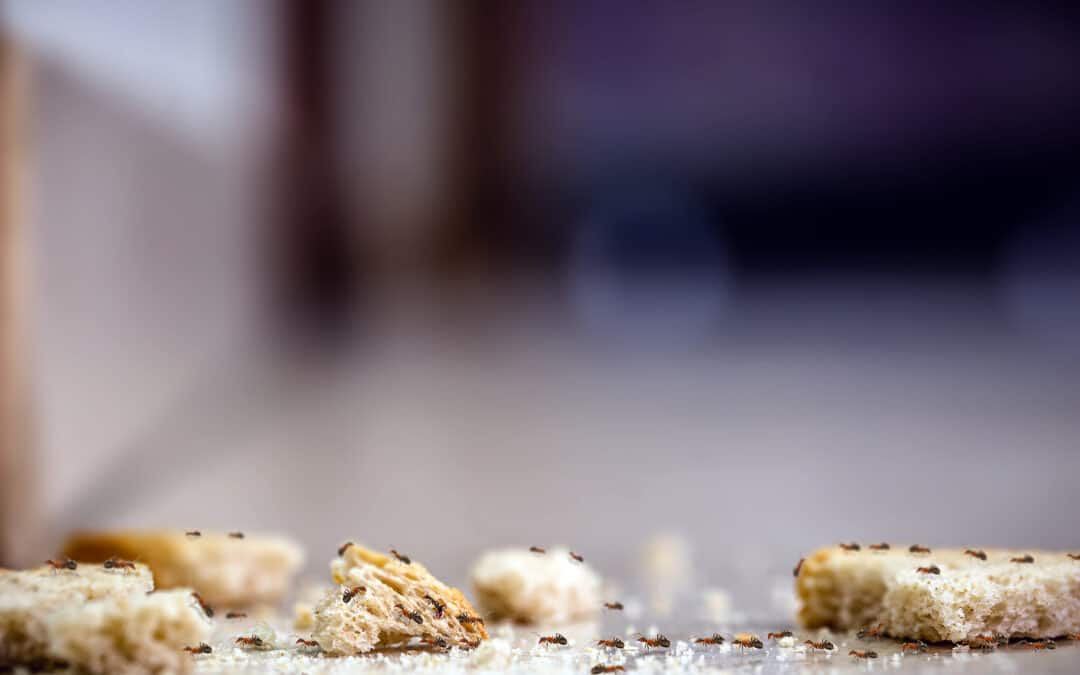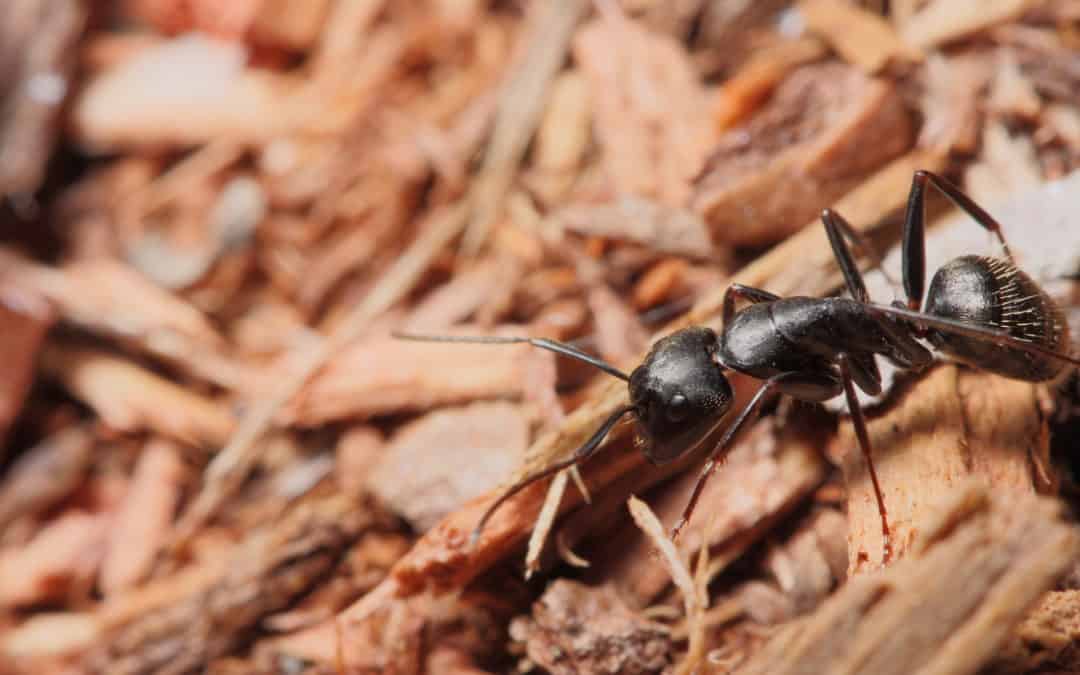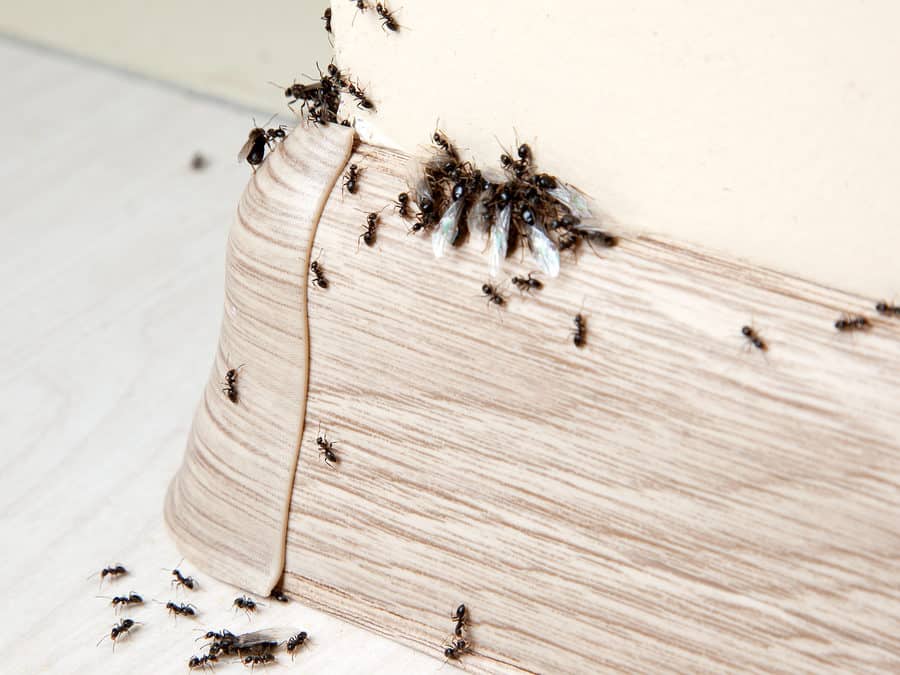READY TO GET STARTED?
REQUEST A FREE ESTIMATE
Fill out the form below or call (888) 466-7849 for a free, no-obligation estimate.

If you have never encountered ants in your Alabama home, then count yourself lucky. These household pests have a knack at being some of the most annoying pests to infest – taking over your pantry, kitchen, bathroom, you name it! Here are the best methods of ensuring your home is never taken over by ants!
It’s not surprising to hear that ants prefer to invade kitchens; after all, they provide food, water, and everything ants (and other pests) need to survive. Bathrooms, bedrooms, living rooms, basements, inside walls, and in or around air conditioning and heating units are also known to attract these nuisance pests.
Moisture and standing water are big attractants for ants and many other pests. Be sure to repair any leaky pipes, and routinely check for excess moisture. If your basements, crawlspaces, or attics appear to be damp, then utilize a dehumidifier. On the outside of your home, ensure gutters and downspouts are functioning properly.
Keep your kitchen tidy by cleaning up after cooking and eating to lessen the chance of crumbs being left out. Utilize airtight containers to keep opened food items safe from these tiny pests. Also, make sure to clean up pet food that’s left out, as this is also an attractant for pests.
If ants are finding their way inside, then that means there are entry points on the exterior of your home. Take the time to find where ants are making their way indoors and seal any cracks, gaps, or openings. Utility pipes are usually the number one place where ants can find any potential openings.
Reach out to your local pest control company and they can provide an ant-free home!

The kitchen is one of the most common rooms in your home to have ants, closely followed by the bathroom. The most common ants found indoors are odorous house ants, also known as nuisance ants. While these ants don’t cause structural damage and aren’t considered dangerous to humans or pets, they can contaminate your food and become quite a nuisance to deal with. Carpenter ants are larger black ants that can also get into your home. These ants do cause structural damage by boring through the wood components of your house.
The ants you find in your home don’t actually live there; they build colonies outdoors and come in looking for food and water to take back. These elements are necessary for the colony to live and grow. Scout ants who find these sources leave a pheromone trail for the rest of the colony to follow which is why you will often see ants traveling in a single line. Because they can scale walls and travel between stories in your home, they can spread quickly and be extremely difficult to get rid of.
Ants are attracted by a number of things found in your home. They use crumbs, spills, loosely sealed food packages, dirty dishes, and even pet food bowls to find food. They use leaky pipes, pet water bowls, and standing water for hydration.
What can you do to keep ants from taking over your kitchen? Prevent ants by:
Killing just the ants you find in your home won’t eliminate the entire infestation. You must eradicate them at the source – at their colonies. These ants can be difficult to eliminate because individual colonies can number in the thousands and they can be spread out all over your property. For assistance in dealing with ants or any other pests you may find in your home, contact your local pest control company for an evaluation.
9 Easy Ways to Keep Birds Away

Every homeowner dreads discovering an ant infestation, whether inside or outside the home. Ants can be a major nuisance as they contaminate food, build their nests in unwanted places, and destroy property. One type of ant in particular, the carpenter ant, is considered a “silent destroyer,” often causing severe damage to homes undetected by excavating wood. These pests can be tough to eliminate but it is possible.
Carpenter ants are ½” to 5/8” long, and are usually red, black, brown, or a combination of these in color. These ants build their nests by creating smooth tunnels inside wood, preferring wet, damp wood. Common places carpenter ants will build their nests include tree stumps, fence posts, window and doorframes, firewood, and other various places with exposed wood. Carpenter ant nests can be problematic to your home as the tunnels they create can damage the structural soundness of wood throughout your property. If you notice sawdust or wood fragments falling throughout your property, there is a good chance that carpenter ants have infested.
Carpenter ants need a constant water source to survive. The first step in preventing ants like these is to eliminate moisture or standing water throughout your property. Consider using a dehumidifier in crawlspaces, basements, and attics to help with dampness. Trim your tree branches and shrubs away from your home, as ants can use these as an access point. Take it a step farther by looking around your property for any gaps or holes and sealing these up with caulk, as ants only need the smallest gap to get inside a house.
Preventing ants might seem like a daunting task; when ants infest it can seem like they are everywhere! Consider reaching out to your local pest control company where they can provide you with a prevention and treatment plan during peak ant season.

Ants are the #1 nuisance pest in America. They are one of the most challenging pests to control, along with bed bugs, because their colonies can number in the 1000s. Ants are considered commercial pests because they like to live close to people and eat the same things that we do. Ants can be seasonal pests or a year-round problem depending on the species. They will often enter our homes in the warmer months of the year in search of water and food. Most species, including fire ants and odorous house ants, will build their nests outdoors and come inside in search of food that they will collect and take back to their colonies. Other species like carpenter ants will actually make their way into your home and build their nests indoors. Ants are often found near food sources, moisture, and in hidden areas where they have protection and concealment such as wall voids, under floors, behind window frames, and under appliances. Ants in the bathroom and ants in the kitchen are the two most common scenarios when these pests make their way into your home, although they can be found in other rooms, as well.
Regardless of the species, when ants become a problem in your home it is often necessary to use a professional pest control company to help get them under control. Here are some important aspects to any successful ant control program:
One of the most important components to any ant control program is to properly identify the species of ant you are dealing with. Different species have different behaviors, prefer different environments, and have different diets so treatment will vary greatly between them. It is important to know where to find them and how to treat them to ensure success in eliminating and controlling them.
One of the main reasons ants come into your home is in search of food to take back to their colony. Eliminating things that attract them can help keep them from taking over your home. Clean up any food crumbs from kitchen floors and countertops and wipe them down frequently. Clean your appliances regularly. Empty your trash routinely and wipe the cans down. Clean outdoor grills and remove crumbs from tables, decks, and patios after each use. Keep foods, including pet food, in sealed containers. Place a bay leaf in canisters of dry food (such as flour) as the scent repels ants and other pantry pests. Rinse any empty containers before placing them in recycling bins. Get rid of any overripe fruit as this will attract ants, as well.
Ants need moisture to survive. Eliminating or reducing the moisture in your home can help prevent ants from coming inside. Repair any leaks around pipes and in your roof. Check gutters to make sure they are not clogged and ensure downspouts are directing rainwater away from foundations. Consider installing gutter guards to help prevent clogs. Thoroughly clean bathrooms with disinfectant cleaners and make sure shampoo, conditioner, and soap bottles are closed tightly and don’t have any leaks.
In order to get into your home, ants have to have a way inside. It is important to identify where they are gaining entry into your home to successfully control and eliminate them. Carefully inspect the exterior of your home and seal any holes, gaps, and cracks especially around areas where pipes and wires enter your home. Trim back shrubs and tree branches so they are not touching the sides or roof of your home. Keep mulch and timber at least 2 feet from your foundation. Move debris such as firewood, rock piles, boards, etc away from your home. Remove any tree stumps, fallen tree branches and logs from your yard. Repair any holes in window and door screens and replace weatherstripping.
As always, if you suspect you have an ant problem, contact a professional ant control company who can help you properly identify the species of ant you have and set you up with a thorough and comprehensive treatment and control plan.